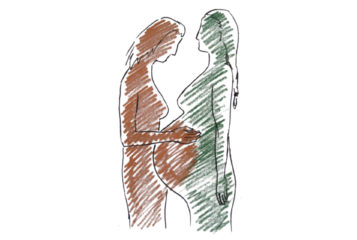In 2012, the IVF sector in the UK helped to bring about 17,673 IVF births and 1,800 donor-conception births, the happy outcome of nearly 68,000 cycles of treatment. That's in a context of declining multiple birth rates, which the sector brought about without significantly affecting success rates for patients.
IVF in the UK is thriving. But is it as good as it could be? Could the quality of care be higher? Could success rates increase further? Most importantly, do patients and donors feel well cared for in the clinic? And do they, and the children they produce, feel well-supported in the years that follow treatment?
At the HFEA, these questions are now uppermost in our minds. With the future of IVF regulation clear, we want to think about how we can help to get the best out of the IVF sector in the UK. As the IVF regulator, we clearly need to do our core business - inspection, licensing, providing donor information - well. That will always preoccupy us. But an effective regulator should surely do much more than checking compliance with requirements.
We’ve started to think about what that 'more' should be. Unsurprisingly, we believe that the quality of care for patients is what matters most. With this in mind, we have set out our strategic goals:
- The patient: We will put patients' interests and safety first.
- Donor conception: We will improve the lifelong experience for donors, donor conceived people, patients using donor conception, and their wider families.
- Quality: We will work with clinics to improve quality of care for the direct benefit of patients.
Earlier this month we published a consultation to help us develop these goals into a concrete set of priorities. We've come up with some ideas which we started to test out at our recent conference. For those who couldn’t make the conference, the presentations from the day are available on our conference microsite, which we will add to over time.
One of the issues we want to consider is whether patient feedback about their experience of treatment in a particular clinic should be used to improve services. Clinics obviously ask patients directly and make changes to their service in response to their feedback. Around the date of a clinic's inspection, we also ask for patient feedback about their experience of treatment: whether they were given the right information and an opportunity to see a counsellor and whether they were treated with dignity. We use the findings to help us assess the clinic's performance and compliance and we summarise our findings in an inspection report which is published on our website.
It's unlikely that prospective patients, when choosing a clinic, look at a clinic's performance in that much detail. After all, their main concern is the clinic's success rate. But shouldn't patients have richer information on which to base their decision? We know that many patients come to our website to use our Choose a Fertility Clinic tool — 15,000 a month do so. If they were able to see feedback from fellow patients about a clinic — whether live and unmoderated or aggregated from questionnaires — that would give them more to go on. And, importantly, it might improve the quality of care in all clinics. If clinics know that patients are choosing a clinic not just on clinical outcomes, but also on patient feedback, it would sharpen their focus on the experience of treatment, rather than merely the outcome.
In other areas of our lives, we are increasingly using such tools to make choices about the public services we use and the things that we buy. Should such an approach be used in IVF? You can give us your view by taking part in our consultation and completing the questionnaire by 28 March 2014.






Leave a Reply
You must be logged in to post a comment.